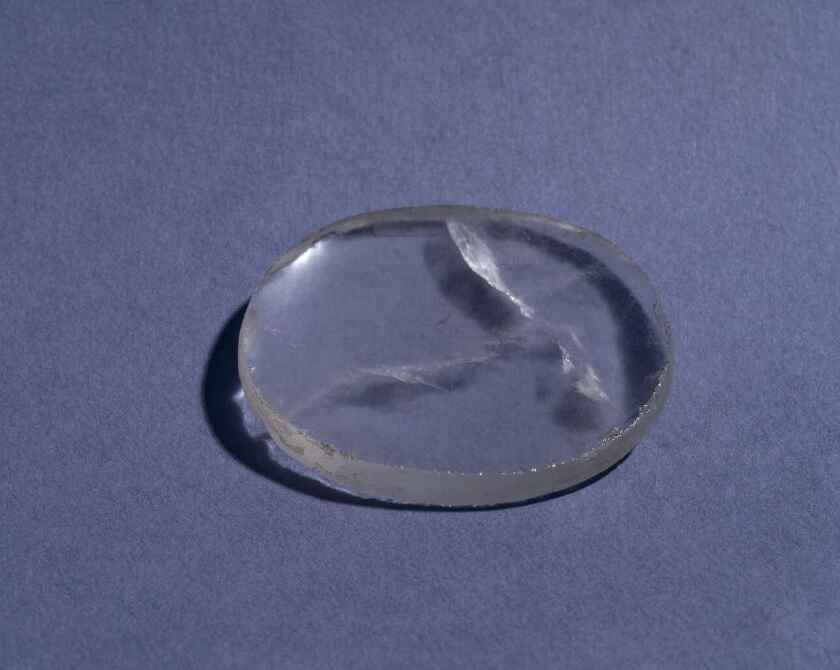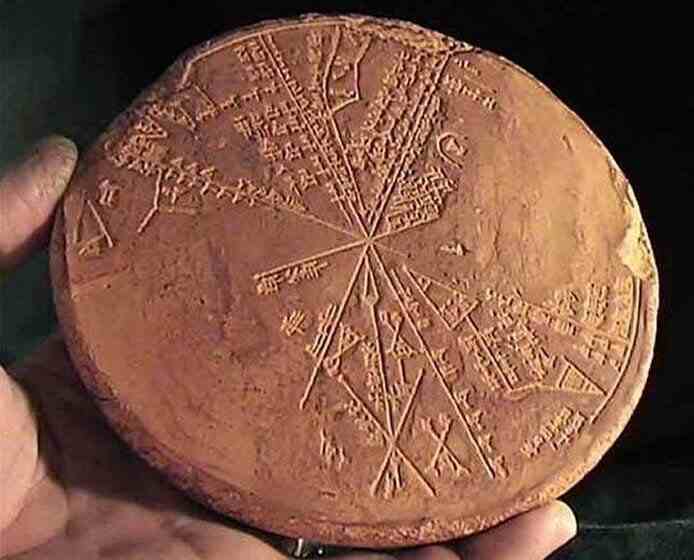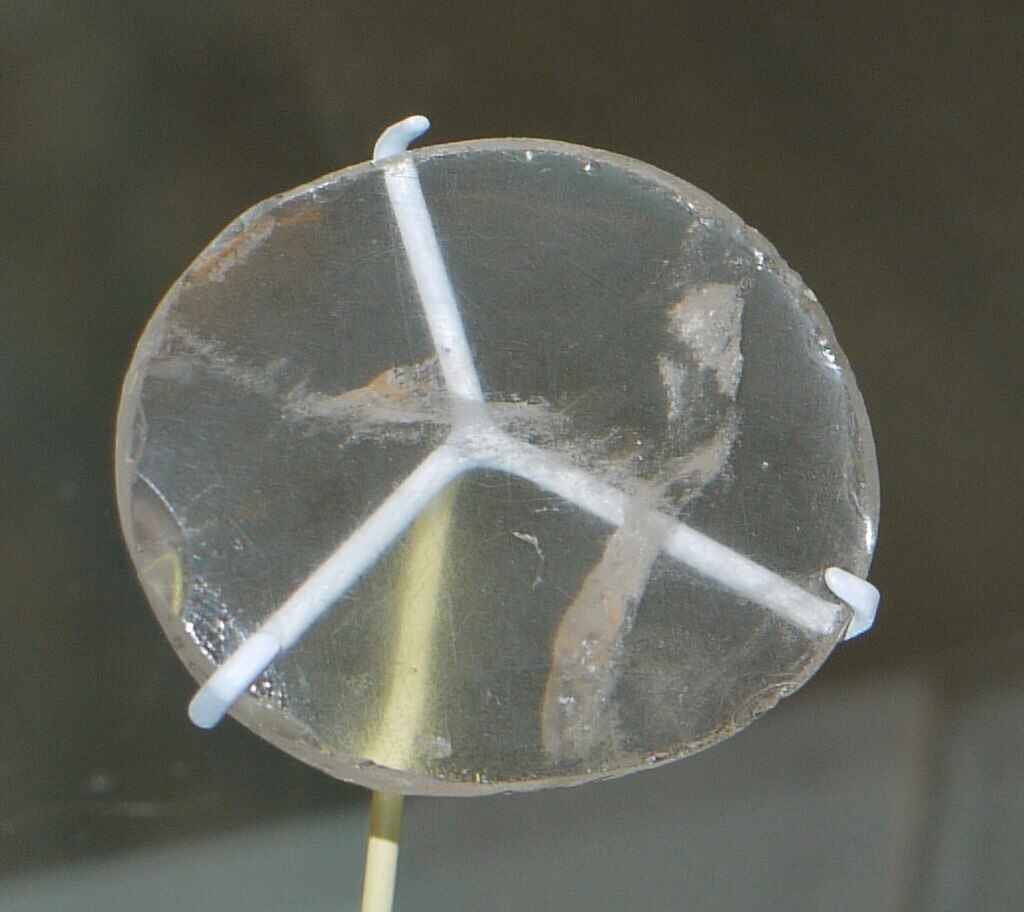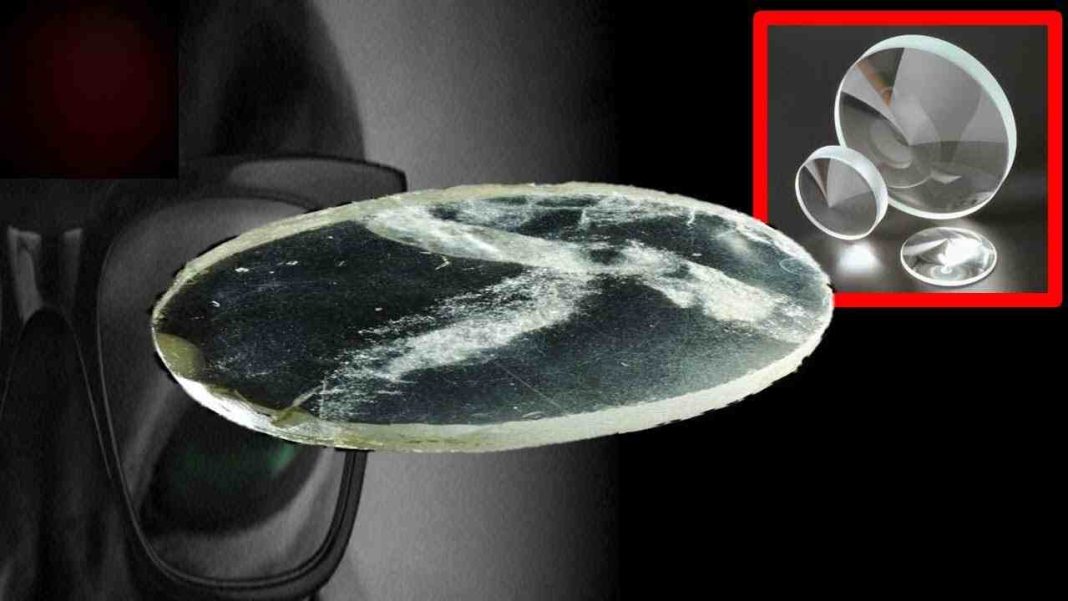The Nimrud lens, a mysterious 3,000-year-old artifact discovered in the ancient Assyrian city of Nimrud, challenges our understanding of ancient technology. Crafted from rock crystal, this lens has sparked debates among historians and scientists about its true purpose. Was it a simple magnifying glass, a burning tool, or perhaps part of an early telescope? This article explores the fascinating theories surrounding the Nimrud lens, examining its potential role in Assyrian craftsmanship and astronomy, and questioning whether our ancestors were more technologically advanced than we once believed.
The Discovery of the Nimrud Lens
The Nimrud lens, a small piece of rock crystal, was unearthed in 1850 by Sir Austen Henry Layard during his excavations of the ancient Assyrian city of Nimrud, located in present-day Iraq. This discovery, made in the heart of one of the world’s oldest civilizations, sparked a mystery that has intrigued historians and scientists for over a century. The lens, dated to around 750-710 BC, is believed to be around 3,000 years old, placing it within the Neo-Assyrian period—a time when the Assyrian Empire was at its zenith, dominating much of the ancient Near East.

What makes the Nimrud lens so fascinating is its potential significance as an early optical instrument. Carved from natural rock crystal, the lens is slightly oval in shape and measures roughly 4 centimeters in diameter. Its focal length, the distance at which it focuses light, is approximately 12 centimeters. These dimensions suggest that the lens could have been used as a magnifying glass, capable of enlarging small objects, or perhaps even as part of a more complex optical device.
The question of how this artifact was used, and by whom, remains a subject of debate. Some scholars suggest that Assyrian craftsmen might have employed the lens for intricate work, such as engraving tiny seals or carving detailed reliefs. Others propose more ambitious theories, such as its use in early astronomy, potentially making the Nimrud lens one of the oldest known telescopic devices in history. However, definitive evidence is elusive, and much of what is understood about the lens remains speculative.
Yet, the very existence of the Nimrud lens challenges our understanding of ancient technology. It invites us to reconsider the sophistication of the Assyrians and their knowledge of optics—a field that we often assume was developed much later in history.
Understanding the Nimrud Lens Artifact
The Nimrud lens, often referred to as the Layard lens, is a small but intriguing artifact made from natural rock crystal. Discovered during the excavation of the ancient Assyrian city of Nimrud, the lens dates back to between 750 and 710 BC. Its very existence raises questions about the technological capabilities of the Assyrians, who ruled a vast empire during this period. The lens is roughly oval in shape, with dimensions that suggest it was carefully crafted, possibly using a lapidary wheel—an advanced tool for its time, used to grind and polish stones.
What stands out about the Nimrud lens is its optical quality. It has a focal point about 11 centimeters from its flat side and a focal length of approximately 12 centimeters. These measurements indicate that it could focus light, albeit imperfectly, and magnify objects up to three times their actual size. The surface of the lens reveals evidence of twelve cavities, which were likely filled with a substance such as naphtha during its creation. These small details suggest a level of craftsmanship and knowledge of materials that might surprise those who view ancient civilizations as technologically primitive.

The British Museum, where the Nimrud lens is housed, has described it as having been “carefully ground and polished,” though they controversially downplay its significance by suggesting its optical properties were “probably accidental.” This statement, however, does not align with the meticulous effort required to shape such a lens. While some experts speculate that the lens might have been used as a simple magnifying glass, others argue that its creation points to a more sophisticated understanding of optics.
The lens’s ability to focus sunlight also raises the possibility that it could have been used as a burning glass—a tool to start fires by concentrating sunlight. However, its exact purpose remains a mystery, and the debate over its true function continues to this day.
Debates and Theories: The Purpose of the Nimrud Lens
The purpose of the Nimrud lens has been a subject of intense debate among scholars and historians for decades. One of the earliest theories, proposed by Sir Austen Henry Layard, the archaeologist who discovered the lens, suggests that it was used as a magnifying glass. Layard believed that Assyrian craftsmen might have employed the lens to create the intricate and finely detailed carvings found on seals and clay tablets. These engravings, which often feature minuscule symbols and complex patterns, could have required magnification to achieve such precision.
However, not everyone is convinced by this theory. Critics argue that the lens’s optical quality is too poor to serve effectively as a magnifying tool. The imperfections in the crystal and the roughness of its grinding suggest that while it could magnify objects, it may not have been particularly useful for detailed work. This has led some experts to dismiss the idea that the lens was crafted specifically for this purpose.
Another intriguing hypothesis is that the Nimrud lens was used as a burning glass—a device capable of focusing sunlight to ignite fires. The use of burning glasses in the ancient world is well-documented, with references in Greek and Roman texts. However, there is no direct evidence linking the Nimrud lens to this function, and the theory remains speculative.
Perhaps the most controversial theory comes from Italian scientist Giovanni Pettinato, who proposed that the Nimrud lens was part of an ancient telescope. Pettinato suggested that the Assyrians might have used the lens in conjunction with other optical components to observe the heavens, potentially making it one of the earliest telescopic devices known to history.

This idea, while fascinating, challenges the conventional timeline of optical technology, which traditionally dates the invention of the telescope to the early 17th century. Yet, Pettinato’s theory finds some support in the Assyrians’ advanced knowledge of astronomy, a field in which they excelled.
The Nimrud Lens and Ancient Assyrian Astronomy
The connection between the Nimrud lens and ancient Assyrian astronomy is one of the most captivating aspects of this enigmatic artifact. The Assyrians, known for their advanced understanding of the cosmos, recorded celestial events with remarkable accuracy. Their astronomical knowledge, preserved on clay tablets, included detailed observations of the movements of planets, stars, and the phases of the moon. This raises the question: Could the Nimrud lens have played a role in their sophisticated astronomical practices?
Italian scientist Giovanni Pettinato’s theory that the Nimrud lens was part of an ancient telescope draws attention to this possibility. According to Pettinato, the Assyrians may have used the lens in conjunction with other optical elements to observe the night sky.
If true, this would place the Nimrud lens as one of the earliest known tools for stargazing, predating the invention of the telescope by over two millennia. This theory, while controversial, is not entirely without merit. The Assyrians’ extensive understanding of ancient Assyrian astronomy, as evidenced by their detailed records and celestial observations, supports the notion that they may have used tools like the Nimrud lens to enhance their astronomical practices.
One piece of evidence supporting this idea is the Assyrians’ depiction of Saturn as a god surrounded by a ring of serpents. Pettinato suggests that this could be a visual interpretation of Saturn’s rings, which would only be visible through magnification. While mainstream scholars remain skeptical, dismissing the idea as an overreach, the theory challenges our understanding of ancient technology and pushes us to reconsider the limits of what ancient civilizations might have achieved.

The debate over the Assyrians’ potential use of telescopic devices is further fueled by the fact that lenses were known and used in other ancient cultures, such as in Egypt and Greece. While the specific function of the Nimrud lens remains uncertain, its connection to the Assyrians’ astronomical knowledge continues to intrigue researchers, offering a glimpse into a world where the boundaries between myth, science, and technology were far more fluid than we might imagine today.
Frequently Asked Questions (FAQs)
1. What is the Nimrud lens?
The Nimrud lens is an ancient rock crystal artifact discovered in 1850 in the Assyrian city of Nimrud, modern-day Iraq. Dating back around 3,000 years, it is believed to have been used for optical purposes, though its exact function remains a subject of debate.
2. Who invented the Nimrud lens?
The exact individual or group who crafted the Nimrud lens remains unknown. It is attributed to the Assyrian civilization, which was advanced in various fields, including astronomy and craftsmanship, during the time of its creation.
3. How was the Nimrud lens discovered?
The Nimrud lens was discovered by Sir Austen Henry Layard during his archaeological excavations of the ancient Assyrian city of Nimrud in 1850. It was found in the ruins of the city, which was once a major center of the Assyrian Empire.
4. What theories exist about the use of the Nimrud lens?
There are several theories about the use of the Nimrud lens. Some suggest it was used as a magnifying glass for detailed work, others propose it served as a burning glass to start fires, and some believe it may have been part of an ancient telescope used for astronomical observations.
5. Why is the Nimrud lens significant in the study of ancient technology?
The Nimrud lens is significant because it challenges modern assumptions about the technological capabilities of ancient civilizations. Its optical properties suggest that the Assyrians may have had a deeper understanding of optics than previously believed.
Legacy and Controversy: The Nimrud Lens Today
The legacy of the Nimrud lens extends far beyond its physical dimensions. This small, ancient artifact has ignited a debate that spans disciplines—archaeology, history, and even the philosophy of science. At the heart of this debate is the question of how we interpret ancient technology. The Nimrud lens challenges the conventional narrative that views ancient civilizations as technologically primitive compared to the modern world. Its very existence suggests that the Assyrians, like other ancient cultures, may have possessed knowledge and skills that we have yet to fully understand.
The British Museum, where the Nimrud lens is currently housed, has taken a conservative stance, downplaying the lens’s potential significance. Their description suggests that the optical properties of the lens were likely “accidental” and that it may have been used merely as an inlay for decorative purposes. This interpretation, however, has faced criticism from those who see the lens as evidence of a more advanced understanding of optics. The idea that such a carefully crafted object could be the result of chance seems at odds with the meticulous craftsmanship seen in other Assyrian artifacts.

Moreover, the existence of other ancient lenses, such as those found in Egypt and Crete, lends credence to the idea that the Nimrud lens was part of a broader, albeit largely forgotten, tradition of optical technology in the ancient world. These lenses, which were often used in religious or ceremonial contexts, suggest that ancient peoples may have experimented with the manipulation of light in ways that have been overlooked by modern scholarship.
The controversy surrounding the Nimrud lens also reflects a broader tension in how we view the past. Are we underestimating the technological capabilities of ancient civilizations, or are we over-interpreting isolated artifacts? The Nimrud lens, with its mysterious origins and uncertain purpose, stands as a testament to the complexity of this question.
The Nimrud lens is not the only ancient artifact that challenges our understanding of early technology. Another fascinating example is the Baghdad Battery, an artifact that some believe to be an ancient electrochemical cell, possibly used for electroplating or other electrical purposes. Like the Nimrud lens, the Baghdad Battery raises intriguing questions about the extent of technological knowledge in the ancient world and how these early innovations might have influenced later developments.
Use of Our Content
⚠️ Content on “Mystery Uncover” is protected under US and International Copyright Laws.
You are free to reuse, republish, and share our content by giving credit to the source as Mystery Uncover with a link to the original material on mysteryuncover.com.






